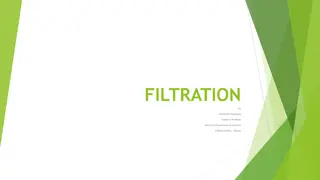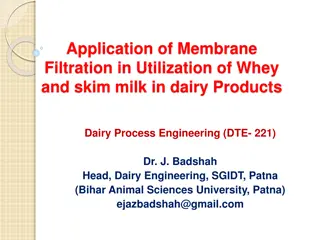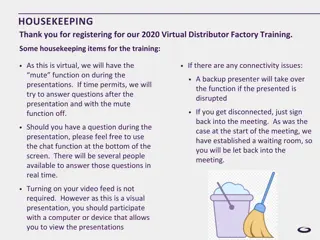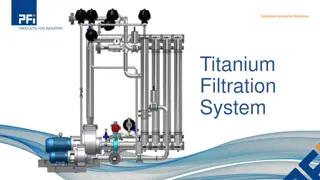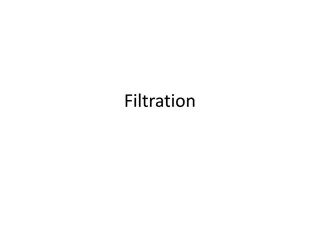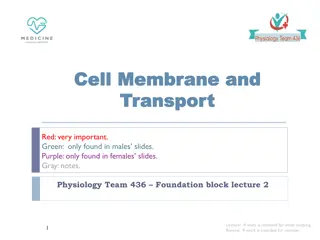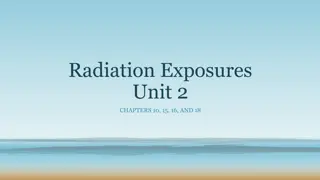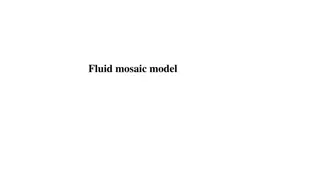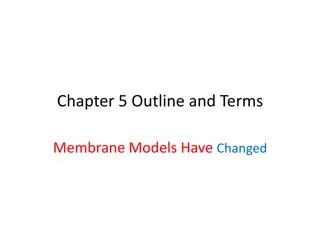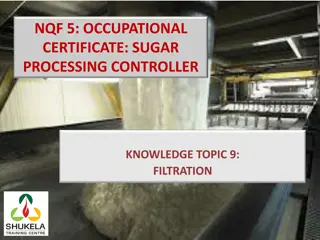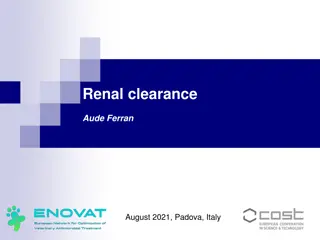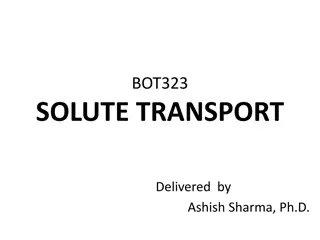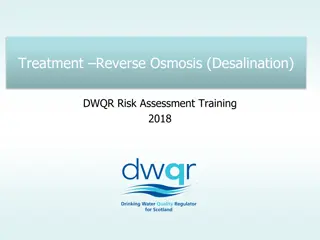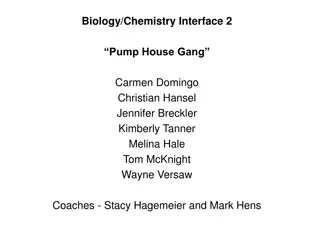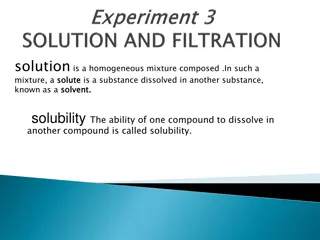Understanding Membrane Treatment in Water Filtration Systems
Membrane treatment plays a crucial role in water filtration systems by removing various contaminants such as turbidity, microbiology, and chemical impurities. This overview covers different types of membranes like plate and frame, spiral wound, tubular, and hollow fiber, highlighting their functions and applications. It emphasizes the importance of proper pre-treatment to maintain membrane integrity and efficiency, along with key considerations for membrane plant design and maintenance.
Download Presentation

Please find below an Image/Link to download the presentation.
The content on the website is provided AS IS for your information and personal use only. It may not be sold, licensed, or shared on other websites without obtaining consent from the author. Download presentation by click this link. If you encounter any issues during the download, it is possible that the publisher has removed the file from their server.
E N D
Presentation Transcript
Treatment Membranes Matt Bower DWQR Risk Assessment Training 2018
Membranes - Overview Extremely fine, modular filter Range of filtration pore sizes Useful for removing range of things from water Turbidity, microbiology, chemical contaminants Choice of membrane depends on application Not maintenance free!
Membranes - Overview a) Plate and frame / flat sheet c) Spiral Wound b) Tubular d) Hollow Fibre
Membranes on PWS Microfiltration Solids Crypto Bacteria (possibly) Algal cells (but maybe not toxins / tastes) Ultrafiltration Colloidal turbidity clay etc Nanofiltration Most colour - but select pore size specification carefully THM precursors Reverse Osmosis Chemiclals Next module
Membranes on PWS Crypto Bacteria (possibly) Algal cells (but maybe not toxins / tastes) Ultrafiltration Colloidal turbidity clay etc
Key Points to Watch For Pre-treatment membrane will block otherwise Cleaning as per manufacturer may involve chemicals (NaOCl, Citric acid .) How would a membrane breach be noticed? Is there a plan for inspection / replacement of membranes? Are spares kept?
Questions TMF1 Is membrane plant specification/design inadequate for raw water quality? The raw water quality at each site will determine the required design of the membrane plant depending on the nature of the water quality challenge. The manufacturer will recommend specific design characteristics and pore sizes for the membranes to remove specific chemical or microbiological contaminants. Ask for evidence that the membrane plant is site-specific. The raw water quality on each supply will determine the filter type, number and size (e.g. 1 micron, 5 micron, etc) depending on the nature of the water quality challenge. The installer should specify this based on quality characteristics of the source water. Ask the owner of the supply if they have details of this specification. (Does this belongs in the top box??) The integrity of the membrane is critical to ensure effective treatment. Therefore the presence of an appropriate pre-treatment is essential to protect the membrane against chemical (e.g. salinity), microbiological, aesthetic contamination or insufficiency of the supply. Pre-treatment must be adequate to prevent fouling and scaling, as well as protecting the membranes from physical damage. There should be suitable protection/screens to neutralise pre-treatment oxidants. Ask the owner to demonstrate, with suitable documentation, that the pre-treatment is adequate. The operator should provide procedures and records of the operation and monitoring of the membrane to check for integrity. Records should also be kept when membranes are replaced, including when ruptured or damaged. Check the membrane's design manual requirements for specification of the cleaning (antifouling and descaling) regime. The operator should provide evidence to demonstrate compliance with this manual. Any chemicals used in the treatment stage should be specified by the manufacturer and the operator should be asked for evidence that the correct chemicals are in use. The use of incorrect chemicals could cause membrane damage. Records should be kept to record cleaning and other maintenance. 5 TMF2 Could lack of pre-treatment cause membrane fouling and damage? 5 TMF3 Are the cleaning regimes (for descaling and antifouling, etc.) inadequate or undocumented? 5 TMF4 Are the chemicals used in the cleaning process incorrect or stored incorrectly? Check the membrane's design manual requirements for specification of the cleaning (antifouling and descaling) regime. The operator should provide evidence to demonstrate compliance with this manual. Any chemicals used in the treatment stage should be specified by the manufacturer and the operator should be asked for evidence that the correct chemicals are in use. The use of incorrect chemicals could cause membrane damage. If the membrane is breached it will not provide a reliable barrier. How would this be picked up? Some membranes have integral automatic detection systems, but other systems may rely on monitoring or sampling. The appropriate integrity monitoring system will depend on the type of membrane and water quality - specialist advice should be sought. TMF6 Could failures occur due to membranes not being replaced as per the manufacturer's specifications? 5 TMF5 Could a loss of membrane integrity go undetected? 5 The manufacturer will specify the frequency at which the filters should be replaced. Ask for evidence that this is being adhered to. Membrane elements need to be handled with care and manufacturers' specifications should be followed closely. 5


